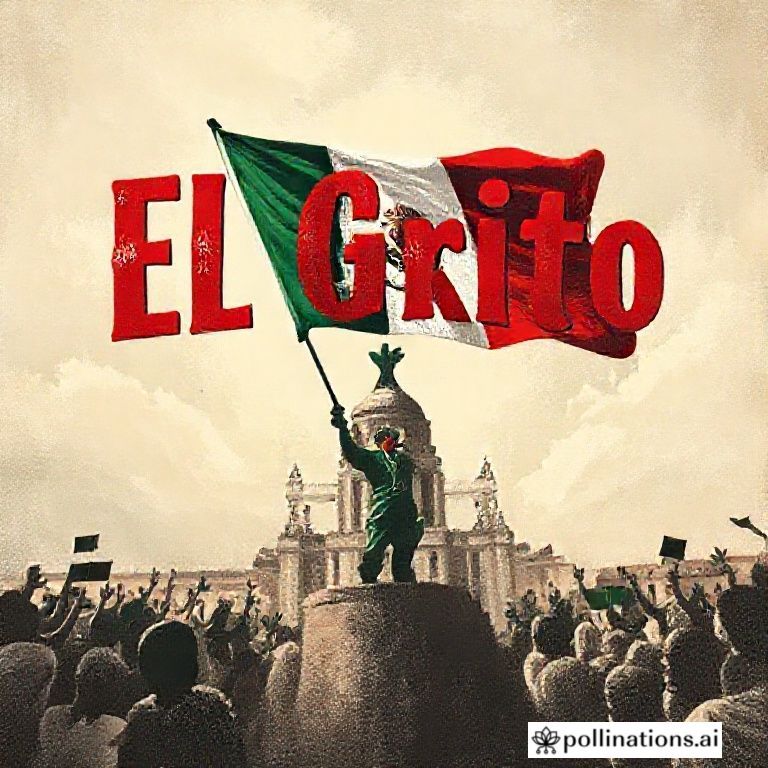Mexican Independence Day is a vibrant and important holiday celebrated every year on September 16th. But the festivities actually begin the night before, on September 15th, with “El Grito de Dolores” (The Cry of Dolores). This passionate and patriotic tradition commemorates the moment that sparked the Mexican War of Independence in 1810, marking the beginning of the nation’s fight for freedom from Spanish rule.
Understanding El Grito is key to grasping the full significance of Mexican Independence Day. It’s more than just a party; it’s a powerful and emotional connection to the country’s history and a reaffirmation of national pride. Join us as we delve into the history and traditions surrounding this momentous occasion.
The History Behind El Grito de Dolores
The story of El Grito begins in the small town of Dolores Hidalgo, Guanajuato. On the morning of September 16, 1810, Miguel Hidalgo y Costilla, a Catholic priest, rang the church bells and delivered a rousing speech to the townspeople, calling them to rise up against Spanish colonial rule. This act, known as “El Grito de Dolores,” is considered the starting point of the Mexican War of Independence.
Hidalgo’s cry resonated deeply with the Mexican people, who had long suffered under Spanish oppression. His words ignited a fire of rebellion that spread throughout the country, leading to a decade-long struggle for independence. Although Hidalgo himself was eventually captured and executed, his legacy as the father of Mexican independence lives on.
What Exactly Did Hidalgo Say?
The exact words spoken by Hidalgo during El Grito are debated by historians, as no official record exists. However, it is generally believed that he called upon the people to fight for their freedom and for the Virgin of Guadalupe, a powerful symbol of Mexican identity. A common version of El Grito includes phrases like “¡Viva la Virgen de Guadalupe!” (Long live the Virgin of Guadalupe!) and “¡Viva México!” (Long live Mexico!).
Modern Celebrations of El Grito
Today, El Grito is celebrated with great enthusiasm across Mexico and in Mexican communities around the world. The tradition is carried out each year by the President of Mexico, as well as by governors and mayors in cities and towns throughout the country.
The Presidential Grito
The most prominent El Grito celebration takes place in Mexico City’s Zócalo (main square). On the night of September 15th, the President of Mexico stands on the balcony of the National Palace and recreates Hidalgo’s cry, shouting traditional phrases and the names of Mexican heroes. The crowd below responds with cheers of “¡Viva!” and the ringing of bells. The event is followed by fireworks, music, and dancing, creating a festive atmosphere that lasts well into the night.
Local Celebrations and Traditions
- Town Squares: In cities and towns across Mexico, local officials lead their own versions of El Grito in the main squares, often accompanied by live music, food stalls, and traditional dances.
- Family Gatherings: Many families gather at home to celebrate El Grito with traditional Mexican food, such as pozole, enchiladas, and chiles en nogada.
- Patriotic Decorations: Homes, streets, and buildings are decorated with the colors of the Mexican flag: red, white, and green.
- Fireworks: Fireworks displays are a common sight during El Grito celebrations, symbolizing the spark of rebellion that ignited the Mexican War of Independence.
The Significance of El Grito Today
El Grito de Dolores remains a powerful symbol of Mexican national identity and pride. It is a reminder of the sacrifices made by those who fought for Mexico’s independence and a celebration of the country’s rich history and culture. By participating in El Grito celebrations, Mexicans reaffirm their commitment to their nation and their shared values.
The event also serves as a reminder of the ongoing struggle for social justice and equality in Mexico. While the country has made significant progress since its independence, many challenges remain. El Grito is an opportunity to reflect on these challenges and to recommit to building a better future for all Mexicans.
Conclusion
El Grito de Dolores is more than just a historical reenactment; it’s a living tradition that connects Mexicans to their past, celebrates their present, and inspires hope for the future. By understanding the history and significance of El Grito, we can gain a deeper appreciation for Mexican Independence Day and the rich cultural heritage of this vibrant nation. So, next September 15th, join in the festivities and experience the passion and patriotism of El Grito for yourself!
If you enjoyed learning about El Grito, be sure to check out our other articles on Mexican culture and traditions!
IMAGE: A vibrant and colorful scene depicting the El Grito celebration in Mexico City’s Zocalo. The President of Mexico is on the balcony of the National Palace, surrounded by Mexican flags. Below, a massive crowd cheers and waves flags. Fireworks explode in the night sky, illuminating the scene with bursts of red, white, and green. The mood is festive, patriotic, and energetic. The style is realistic and celebratory.


